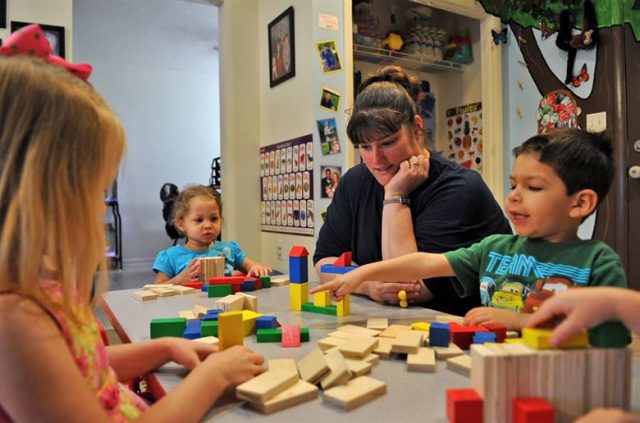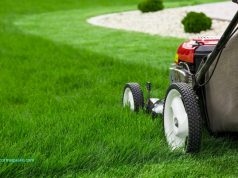OHIO – Gov. Dewine announced on Thursday that Child care would open up on May 31 with restrictions some suggested and some mandatory. Today he released those provisions.
Mandatory practices
Child care providers must operate under reduced staff to child ratios and maximum group size limitations at all times.
• One child care staff member per four infants with no more than six children in the room.
• One child care staff member per six toddlers with no more than six children in the room.
• One child care staff member per nine preschool children with no more than nine children in the room.
• One child care staff member per preschool-age children with no more than nine children in the room. • Employees must perform daily symptom assessment.*
• Require employees to stay home if symptomatic.
• Child care providers must ensure that children wash their hands upon entering their classroom.This may require providers to assist children with handwashing.
• Child care providers must check the temperatures of
all staff, children, and adults upon arrival. If any individual has a fever of 100 degrees or higher, they may not enter the facility.
• Child care workers must follow rigorous handwashing procedures as detailed in Appendix B to Ohio Administrative Code 5101:2-12-13.
• Upon arrival for the day,after breaks and upon returning from outside.
• After toileting or assisting a child with toileting.
• After each diaper change or pull-up change.
• After contact with bodily fluids or cleaning up spills or
objects contaminated with bodily fluids.
• After cleaning or sanitizing or using any chemical
products.
• After handling pets, pet cages or other pet objects that
have come in contact with the pet.
• Before eating, serving or preparing food or bottles or
feeding a child.
• Before and after completing a medical procedure or
administering medication.
• When visibly soiled (must use soap and water). • Priortodeparture.
• Child care attendees must follow rigorous handwashing procedures as detailed in Appendix B to Ohio Administrative Code 5101:2-12-13.
• Upon arrival for the day.
• After toileting/diaper change.
• After contact with bodily fluids.
• Afterreturninginsideafteroutdoorplay.
•
Recommended Best Practices
Child care workers should wear a cloth face covering, unless it is unsafe for them to do so.
• Cloth face coverings should not be worn if the person has trouble breathing, is unconscious,
is incapacitated, or they are unable to remove the mask without assistance.
Providers should modify pick-up and drop-off to ensure social distancing.
• Providers may stagger drop-off and pick-up times to reduce contact between families.
• Parent or caretaker should, when safe to do so, wear a mask for pick-up and drop-off.
• The same parent or caretaker should conduct pick-up and drop-off each day.
• Providers should conduct“curbside”pick up and drop-off where possible.
• Asingleemployeeshouldoperatechild pick-up and drop-off, escorting all children to and from their classroom.
Child care providers should limit parent and visitor entry into the facility.
Child care providers should cancel all field trips, excursions, and large-group events such as parties. Child care providers should, to the extent possible, prevent groups from mixing.
• Children of the same employer, to the extent possible, should be in the same group.
• Teachers should remain with their group throughout the day.
• Support staff should only serve one group of children and should not “float” from room to room.
Child care providers should stagger the use of any communal space, such as playgrounds, lunchrooms, and bathrooms. Providers should sanitize communal spaces between each group of children.
When temporary dividers are used, child care providers should ensure that groups do not mix.
• Providers should use different entrance/exits for each group of students.
• Providers should use separate sinks for each group of kids.
• To the extent possible, providers should use different bathrooms for each group.
Child care providers should sanitize toys after each use and remove toys that cannot be sanitized.
* Per the CDC, symptoms include cough, shortness of breath, difficulty breathing, fever, chills, repeated shaking with chills, muscle pain, headaches, sore throat, and new loss of taste or smell
DuringtheDay
cont.
Mandatory
• After handling pets, pet cages or other pet objects that have come in contact with the pet before moving on to another activity.
• Before eating or assisting with food preparation. • Afterwateractivities.
• When visibly soiled(must use soap and water). • Prior to departure.
• Child care providers may use non-permanent sinks to meet handwashing requirements.
• Child care providers must immediately send home any child or employee who has a temperature of 100 degrees or higher.This individual may not return until they are fever free for 24 hours, without the use of fever-reducing medication. If the individual has had contact with someone confirmed or probable to have COVID-19, he or she must complete isolation or quarantine procedures in coordination with the local health department prior to returning to the program.
• Child care providers must ensure that children wash their hands prior to departure.This may require providers to assist children with handwashing.
• Child care providers may use temporary walls to divide a room into smaller spaces to serve multiple groups, under limited circumstances.
• The smaller space must contain at least 35 square feet of space per child.
• The divider must be at least six feet in height.
• The divider must be made from nonporous material or
other material that can be sanitized.
• The divider must meet any requirements set by the
Department of Commerce, local building department, state fire marshal, or local fire safety inspector.
• Child care providers may use temporary walls to divide a room into smaller spaces to serve multiple groups, under limited circumstances.
• Immediately isolate and seek medical care for any individual who develops symptoms while at the day care facility.
• Shutdown rooms for deep sanitation, if possible.
• Child care providers should immediately notify the
Department of Job and Family Services in writing of any confirmed cases of COVID-19 among children or staff
Recommended Best Practices
• Child care providers should wear gloves while serving food and preparing bottles.
• Gloves should be changed between bottle feedings.
• Providers should modify pick-up and drop-off to ensure social distancing.
• Providers may stagger drop-off and pick-up times to reduce contact between families.
- Caregiver should, when safe to do so, should wear a mask for pick-up and drop-off.
- Providers should conduct“curbside”pickup and drop-off.
• Asingleemployeeshouldoperatechild pick-up and drop-off, escorting all children to and from their classroom.
- Work with local health department to identify potentially infected or exposed individuals to help facilitate effective contact tracing/notifications.
- Once testing is readily available, test all suspected infections or exposures.
- Following testing, contact local health department to initiate appropriate care and tracing.









